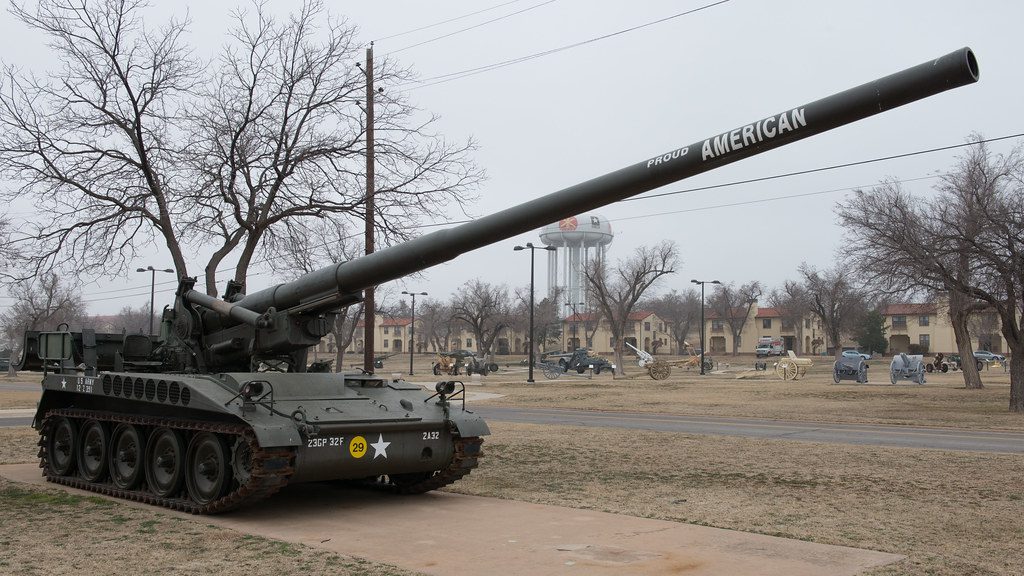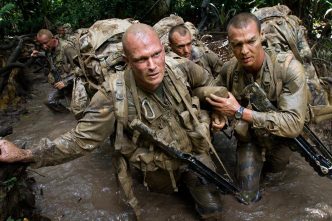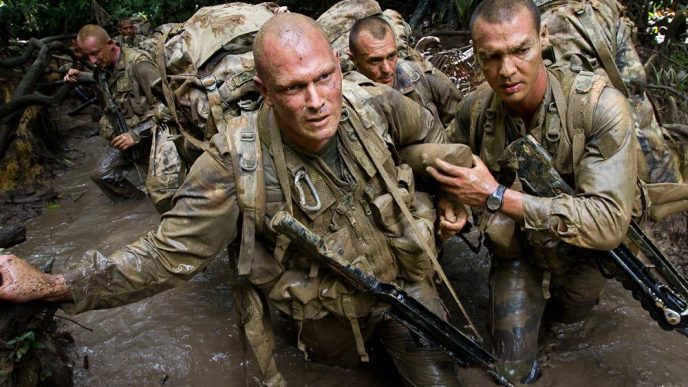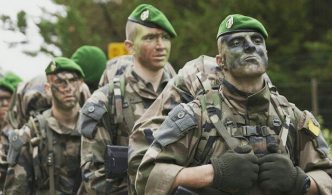The main difference between tanks and self-propelled guns lies in their intended role and the capabilities required to perform that role. Despite their similarities in appearance, as depicted by the models in the above picture, the public often mistook self-propelled guns (right) for tanks (left).
Introduction
A modern main battle tank (MBT) is designed for direct fire against other armored vehicles, such as additional tanks and infantry fighting vehicles, and secondary capability against soft targets. In contrast, a self-propelled gun (SPG) primarily engages soft targets but has a secondary role against fortifications and armor. Direct fire is more accurate and effective than an indirect fire of the same caliber but has a shorter range and can only be used when the target is within the line of sight.
To this end, self-propelled guns are typically protected against small infantry arms, heavy machine guns, and artillery fragments if they are surprised by reconnaissance units or caught in counter-battery fire. However, they are not protected against anti-tank weapons, as they are intended to be positioned behind the front lines. Their gun is typically a howitzer, often based on a towed model, with the ability to elevate to over 45 degrees. It can also be lowered to a horizontal position and used for direct fire against approaching enemies. It lacks a top-of-the-line tank’s advanced optics, including night vision and laser range-finding.
Difference
Many self-propelled guns (SPGs) resemble tanks, as they often have turrets and tracks and are based on tank chassis. However, some are wheeled, and there have been several examples since World War II that are open-topped or unarmored.

SPG turrets are broader and taller than tank turrets, as they do not need to present a small target with a low silhouette but need space for larger ammunition and a gun crew or autoloader to operate.
On the other hand, a main battle tank (MBT) is armored across the frontal arc to protect against expected anti-tank threats and equipped with a high-velocity cannon firing specialized armor-piercing solid shots. It can also fire other shells, such as high explosives (HE), fired at a lower velocity than armor-piercing penetrators. A 120mm HE tank shell is generally similar to a 120mm HE artillery shell. Still, due to the shallow trajectory, terminal effects are limited to a smaller area, and these shells typically have less explosive than a 120mm HE mortar bomb.

However, the thicker and stronger walls of shells offer improved fragmentation compared to the thin steel casings of mortar bombs. This results in a smaller blast radius for tank and artillery shells than mortars. Still, paradoxically a larger kill zone as more – and larger – fragments are created, traveling further than lighter and smaller ones from a mortar. The exception is high explosive anti-tank (HEAT) ammunition, which has a relatively reduced fragmentation effect and relies on a focused blast. While used in tanks as a dual-purpose munition in place of HE, it is a comparatively poor anti-personnel weapon.
Therefore, for a given caliber of weapon, the blast effect of conventional HE is more significant for individual mortars, tank guns, and artillery. At the same time, their relative lethality (measured as a radius within which 50% of personnel will be killed) is higher for mortars. For example, a single 120mm mortar round killed 68 people and wounded 144 more in an attack on a crowded marketplace in Sarajevo in 1994.
Indirect fire
However, indirect fire is typically a weapon of mass effect, designed to blanket a target with overlapping areas of impact, causing destruction and disruption from different angles, suppressing the enemy’s ability to act effectively, or even neutralizing heavy weapons and vehicles. Suppression refers to forcing personnel to take cover and psychologically assaulting them, while neutralization means killing personnel and destroying optics and other sensitive components. Therefore, the lower per-round lethality is offset by the number of rounds detonating in the target area. The reduced lethal radius allows infantry to advance closer to a barrage, ready to move onto the target as soon as it is lifted.
Direct fire

Direct fire involves aiming and firing at a target that is within sight. It requires precise targeting to effectively neutralize individual targets rather than relying on saturation fire. However, there are exceptions to this rule. For example, guided artillery munitions can be used to precisely target tanks or fortifications using specialized anti-armor or bunker-busting shells, effectively fulfilling the role of direct fire support.
During World War II, self-propelled artillery was frequently utilized as direct-fire “assault guns” by the Germans and Soviets. These mobile cannons were mounted on tank chassis with a fixed, armored superstructure rather than a turret. They were used to support front-line troops by neutralizing strong points and potential anti-tank defenses. Due to their intended use, assault guns were often heavily armored on the front.

During World War II, the Germans realized that their assault guns were often being called upon to attack tanks, so in 1942, they began fitting their 75mm howitzer-armed SturmGeschuetz (StuG) IIIs with dual-purpose 75 mm anti-tank guns as well. These guns were mounted on tank chassis with a fixed, armored superstructure and were used as impromptu tank destroyers. The StuG’s chassis could support a larger gun than the tank version due to the lack of a turret’s extra weight. These vehicles proved to be effective tank destroyers in defensive campaigns from 1943 due to their low profile and ability to be placed in ambush positions in close terrain, such as the Normandy bocage. However, they remained under the control of the artillery and were crewed by gunners, not tankers.
The Soviets initially used open-topped self-propelled guns (SPGs) with 76.2mm gun-howitzers for mobile anti-tank and infantry support. However, they later began mounting increasingly heavy artillery, such as 122mm and 152mm guns, in casemates similar to the design of the StuGs. These guns were howitzers used in the direct fire role for infantry support against buildings and bunkers rather than high-velocity anti-tank cannons. They relied on the explosive power of their large shells to disable enemy tanks and were so effective in this role that they were nicknamed “beast killers” or “big cat killers.”

Conclusion
Modern self-propelled guns have access to various advanced munitions, including smart munitions and carrier rounds that can dispense sub-munitions, sensors, smoke, leaflets, and other payloads. They also can use fuzes with point detonation, airburst, and delay capabilities. This gives them greater versatility compared to tank guns, specialized for direct fire only. However, some arms manufacturers, such as Rheinmetall, have developed electronically timed fuzes for tank shells that allow for airburst and behind-cover effects.
Self-propelled guns may appear similar to tanks to the untrained eye, but they are distinct weapons systems with their capabilities and uses.
* The article was based on an original piece by Dom Hyde, a former member of the Royal Artillery’s artillery branch.












